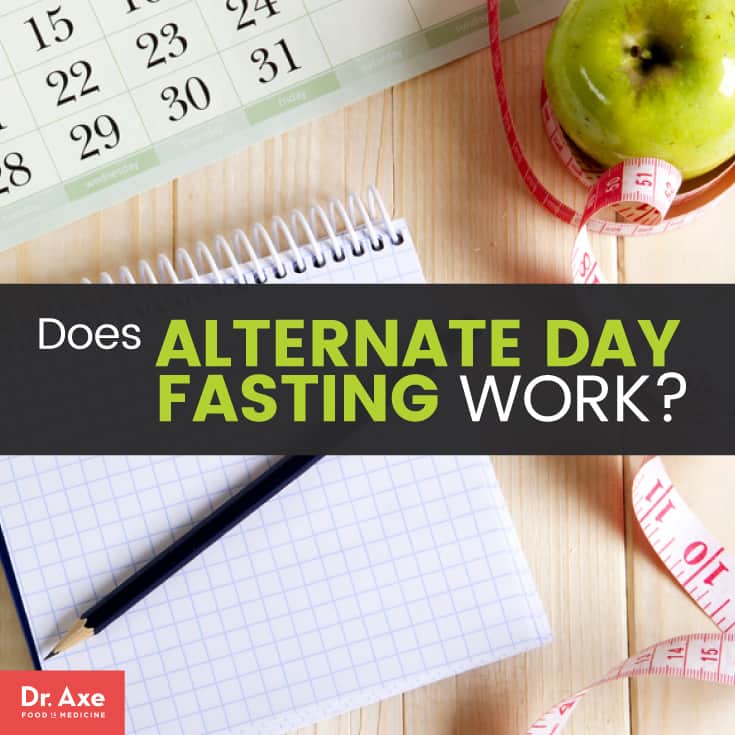This Dr. Axe content is medically reviewed or fact checked to ensure factually accurate information.
With strict editorial sourcing guidelines, we only link to academic research institutions, reputable media sites and, when research is available, medically peer-reviewed studies. Note that the numbers in parentheses (1, 2, etc.) are clickable links to these studies.
The information in our articles is NOT intended to replace a one-on-one relationship with a qualified health care professional and is not intended as medical advice.
This article is based on scientific evidence, written by experts and fact checked by our trained editorial staff. Note that the numbers in parentheses (1, 2, etc.) are clickable links to medically peer-reviewed studies.
Our team includes licensed nutritionists and dietitians, certified health education specialists, as well as certified strength and conditioning specialists, personal trainers and corrective exercise specialists. Our team aims to be not only thorough with its research, but also objective and unbiased.
The information in our articles is NOT intended to replace a one-on-one relationship with a qualified health care professional and is not intended as medical advice.
Does Alternate Day Fasting Work for Weight Loss?
July 17, 2017

By now, you’ve likely heard of the benefits of fasting — how it’s a great method of kickstarting weight loss, helps normalize insulin sensitivity and lowers levels of bad cholesterol in the body. While there are many types of fasting, alternate day fasting in particular has become popular in the rage for losing weight fast.
But researchers are weighing in, and the verdict isn’t too impressive. The small, year-long study published in JAMA Internal Medicine found that alternate day fasting wasn’t any more effective at helping people lose weight than simply restricting calories. (1)
The study followed 100 metabolically healthy obese adults aged 18–64. They were split into three separate groups: alternate day fasting, where they ate just 25 percent of the calories needed; caloric restricted, who ate 75 percent of the calories required each day; or no intervention. The diet portion of the study went on for 6 months and was followed by a 6-month maintenance phase. Each group was given information on portion sizes, reading food labels and understanding calories.
While the study’s primary goal was to better understand the effects of each method on weight loss, it also examined adherence to the diet methods and how each plan affected risk factors for cardiovascular disease.
At the end of the study, the results for those in the alternate day fasting group and the calorie-restricted group were quite similar; alternate day fasting, it turned out, didn’t provide superior benefits for weight loss, protection against cardiovascular disease or weight loss maintenance.
What Is Alternate Day Fasting?
But wait: what is alternate day fasting? Much as the name implies, when you’re on an alternate day fasting diet, the idea is that you severely restrict the number of calories you eat on fasting days, while eating however you’d like during regular days.
You don’t completely cut out food on fasting days, but it is severely restricted — kind of like you don’t eat carbs on certain days in the carb cycling diet. The recommended amount is about 25 percent of whatever your total calories on a diet would be. For example, if you’ve determined that 2,000 calories a day is the amount you require to lose weight, on a fasting day, you’d stick to 500 calories. On non-fasting days, you’d eat the 2,000 calories.
Related: 5:2 Diet: Guide to How It Works, Meal Plan, Benefits & More
Vs. Intermittent Fasting
Technically, alternate day fasting is just another type of intermittent fasting. The most popular type of intermittent fasting is time-restricted eating (TRE). When you follow TRE, you limit your eating to a certain window of time — perhaps 12 p.m. to 6 p.m. — and refrain from eating the rest of the time. Using this example, your fasting time would be 18 hours a day.
Time-restricted eating seems to seriously affect the hormone levels that regulate our metabolism, blood sugar and fat-burning — in a good way, and it’s often combined with a ketogenic diet to affect significant weight loss. See, our bodies prefer working on a regular, clock-like schedule to maintain necessarily bodily functions. When you spend the day grazing through meals and snacks, it’s not really sure what’s happening: Will you be eating again in a few hours, or can it get started on the necessary repairs and maintenance?
But when you’re practicing time-restricted eating, the body learns that it’s on a schedule and that it can maximize those fasting hours to get stuff done. The results are higher fat burning, lower levels of inflammation (which is at the root of most diseases!) and more stable blood sugar levels, which can decrease your risk of diabetes. (2)
Best of all, when it comes to TRE, it’s less about what you eat than when you eat it. This doesn’t mean, of course, that during eating hours, you should go to town on potato chips and fast food. Whole foods, like quality proteins, healthy fats, fruits and veggies will always help your body perform best, no matter what eating plan you’re on. But it does mean that the occasional indulgence or cheese splurge won’t set you back the way it might in a strict, calorie-reduced diet.
For some people, however, alternate day fasting might feel like the best option. Let’s take a look at what makes alternate day fasting effective for some people — and why it might not always be the right choice.
Benefits
1. Alternate day fasting will help you lose weight
If your main goal with alternate day fasting is to lose weight, there’s no denying that this method is effective.
Though several studies have found that while there’s no major difference between restricting calories and alternate day fasting for shedding pounds, ADF seems to have the leg up when it comes to reducing fat mass over strict calorie reduction. (3, 4) This can be especially beneficial for obese individuals.
2. Alternate day fasting can help prevent chronic diseases
A fascinating review of human and animal trials focused on alternate day fasting found that ADF can be a powerful weapon in preventing chronic disease like diabetes, cardiovascular disease and cancer. (5)
In animals, ADF leads to lower rates of diabetes and lower glucose and insulin concentrations. In humans, ADF suggests higher “good” cholesterol levels, which can reduce the risk of heart disease. And in animals again, alternate day fasting reduced the rate of lymphoma, increased survival times after tumors and lowered the multiplication rate of cancerous cells. This all suggests that ADF might actually temper cancer risk factors. While more studies are required in humans, these initial findings are really positive.
3. Alternate day fasting might be easier to follow
Let’s face it: dieting is tough. counting calories (such as in the CICO diet), figuring out what you’re “allowed” to eat, juggling social commitments with a calorie-restricted eating plan — it’s enough to make you throw in the towel.
For some people, that’s the beauty of alternate day fasting. It takes a lot of the guesswork around dieting out of the picture with really simple guidelines: eat minimal calories on fasting days, whatever you want within your caloric range on non-fasting days.
Downsides
1. Alternate day fasting can be hard to commit to long-term
One of the most interesting pieces out of the recent study is that the alternate day-fasting group had a higher dropout rate than those restricting calories.
Of those who stuck it out for the entire duration, there were also more “slip-ups” than the calorie-restricted group. The ADF subjects tended to eat more than the recommended calories on their non-fasting days.
Another study points to the fact that, for people on alternate day fasting diets, hunger on fasting days doesn’t seem to recede and could actually be detrimental to sticking to an ADF plan for a long period of time. (6)
If losing weight quickly is your goal, ADF can definitely help but if you want a way of eating that you can sustain for a long period of time, that might not be it.
2. You might be too tired to hit the gym
It’s a myth that exercise is key for weight loss. But while abs are absolutely made in the kitchen, working out comes with its own health benefits — and you might be likelier to miss them if you’re hungry and tired from an alternate day fast.
Related: The Warrior Diet: Reviews, Meal Plan, Pros & Cons
Risks and Side Effects
If you’re considering an alternate day fast eating plan, it’s important to speak with your doctor, particularly if you’re on medications that need to be taken with food.
You also might find it helpful to come up with a menu for your eating days to help you stay on track with your caloric needs without binge eating, which can derail your weight loss efforts.
Finally, on fasting days, if you find yourself unable to think about anything other than food or feel extreme hunger, it’s best to eat a small meal. While eventually you might “train” your body to get by without much fuel on those days, especially in the early stages, it’s important to ease into this new method of eating without putting too much stress (both mental and physical) on yourself.
Final Thoughts
- A new study has shown that, when it comes to weight loss, alternate day fasting isn’t more effective than restricting calories.
- Alternate day fasting is a type of intermittent fasting.
- While time-restricted eating limits your eating window, in alternate day fasting, you severely restrict how many caloroes you can eat on fasting days.
- Alternate day fasting can be a great way to kickstart weight loss, but can be tough to stick with long-term.
- See your doctor if you’re considering this type of eating plan.








